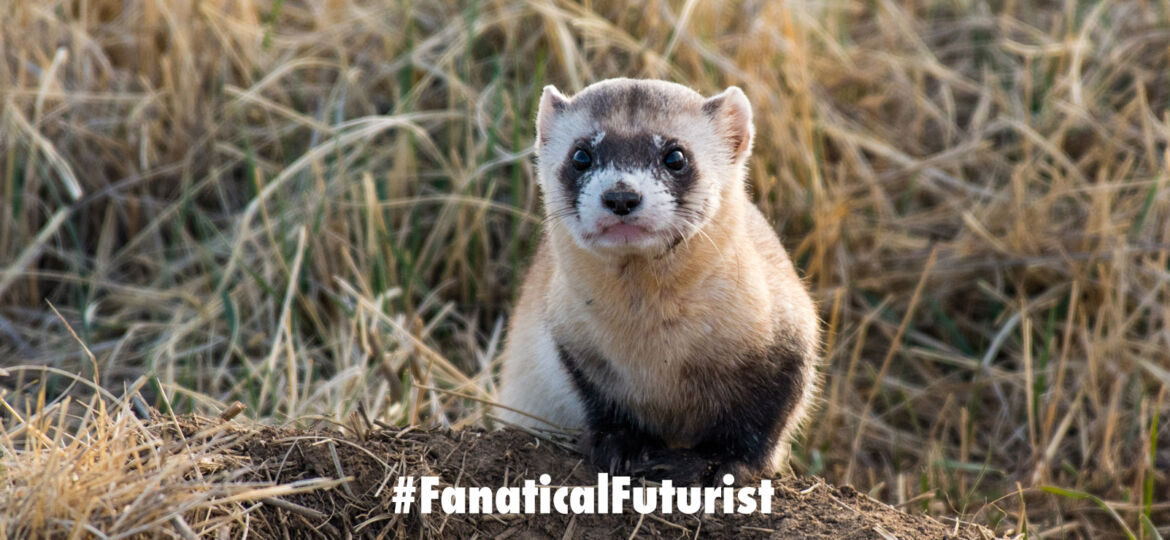
WHY THIS MATTERS IN BRIEF
Our ability to clone and de-extinct complex organisms and animals is getting better – and one day humans will be next.
 Love the Exponential Future? Join our XPotential Community, future proof yourself with courses from XPotential University, connect, watch a keynote, or browse my blog.
Love the Exponential Future? Join our XPotential Community, future proof yourself with courses from XPotential University, connect, watch a keynote, or browse my blog.
Like most of us you probably have dead relatives, and are aware that our time on this mortal coil is short lived – especially when measured against the epoch of time. But, increasingly death no longer has to be permanent and there are an increasingly number of novel ways to resurrect people – whether it’s as avatars, bots, or Virtual Reality (VR) clones, or even by recompiling ancient DNA and using it to bring people back from the dead in physical form by cloning them.
Now, a year or so on after scientists in Japan revived 28,000 year old woolly mammoth cells, we are getting closer to making the latter a reality after scientists cloned an endangered species, a black-footed ferret named Elizabeth Ann, whose donor had been dead for more than 30 years – it might not be Jurassic Park, but for Elizabeth Ann it’s the next best thing.

Meet Elizabeth Ann, reincarnated …
After the original ferret, Willa, died in 1988, scientists froze her body to preserve her genetic material, hoping to someday perform an experiment like this. While a domesticated ferret carried the cloned embryo, the new ferret, who is being raised at a US Fish and Wildlife Service black-footed ferret breeding facility in Fort Collins, Colorado, is still very wild, with all the instincts and aggression that suggests.
Asides from the oddity of the story this is a fresh success story for the black-footed ferret, which has become emblematic of how well conservation and repopulation efforts can work. First, scientists thought the ferret was extinct, after frustrated ranchers poisoned almost all of the animals in the wild. Then, the population grew from a group of just a few, so there are about 1,000 wild black ferrets today -plus populations in wildlife preserves, zoos, and other supervised programs.
Willa was a special animal even before she died. Because of the way black-footed ferrets came back from believed extinction, each animal was precious to the genetic diversity – and with it, the robustness and trait vigor – of the entire new population. So freezing Willa was a way to preserve an important genetic specimen in order for future scientists to find a way to bring those genes back to the group.
“When Willa died, the Wyoming Game and Fish Department sent her tissues to a ‘frozen zoo’ run by San Diego Zoo that maintains cells from more than 1,100 species and subspecies worldwide,” the Associated Press’s Mead Gruver reports.
For now, cloning Willa is a huge help, but that’s not the end of the plans for frozen animals like her.
“Eventually scientists may be able to modify those genes to help cloned animals survive,” Gruver writes.
Willa’s genes were fertilized into an embryo and then carried by a “regular” domestic ferret, who gave birth to Elizabeth Ann. A fellow black-footed ferret didn’t carry the embryo because of the regular risks associated with pregnancy. With the success of this procedure, animal conservators feel more confident about bringing back other specimens, including those that will require genetic debugging, patching, or modification in order to even be successfully cloned.
If this conjures memories of Jurassic Park, you’re not alone. Fears of unintended consequences are valid, but animals like passenger pigeons and the Dodo went extinct because of human irresponsibility, not some specific feature of their ecosystems or climates. Scientists say the benefits of raising the dead outweigh the drawbacks, even if only so that other researchers can study a passenger pigeon in real life instead of textbooks.
Mammals are easier to clone than birds, the scientists say, because birds lay eggs that add complexity to the cloning process. Having Willa’s genetic material back in the mix could make the black-footed ferret more genetically robust and prepared to survive in the wild. For some future cloned passenger pigeon, we might use domestic pigeon genes to make them more robust.
















